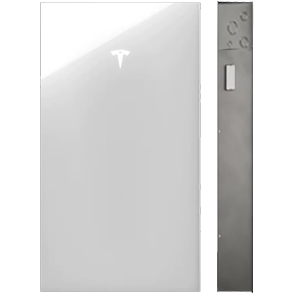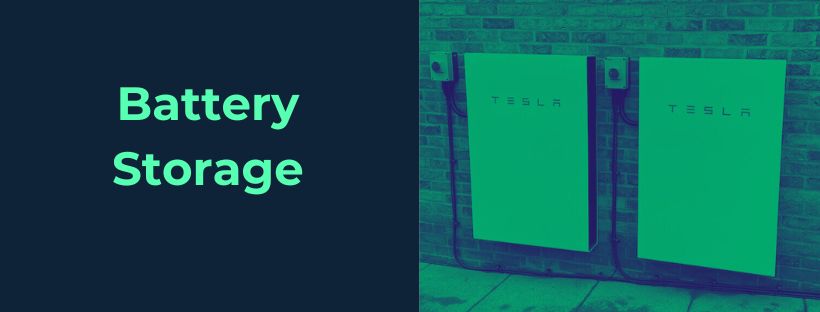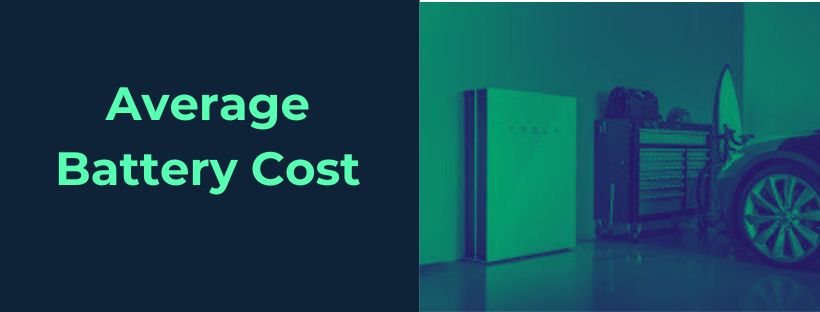Glow Green

 Homepage
Homepage 
Now, you might be wondering, "Just how much will these little light hoarders set me back in 2024?"
We're not just talking the initial outlay here; we've got the inside scoop on installation costs and (you'll love this bit) the grants and funding available to soften the blow. Easy on the pocket, ain't it?
And if you thought we'd stop there, think again!
We're also going to wade into the waters of different solar battery options on the shelves. It's a classic "good, bad and the ugly" situation, but don't worry, we'll help you navigate it.

These beauties are like the magic box in the great game of solar energy, storing all that extra sunshine power your solar panels are guzzling on a bright day.
Genius, right?
They're not just a pretty face, tho’. When those peak times roll up or the power goes on strike, you've got your very own mini power station. (Talk about sticking it to the energy companies, haha!).
So you’re not just reducing your carbon footprint (high five for saving the planet!), but you're also turning your house into an energy-efficient haven.
Told you these flashy home batteries were the bee's knees!
Now, to really get your money's worth, keep an eye on this pair: depth of discharge and usable capacity.
These cheeky factors will make sure you squeeze every last drop of power from your solar set-up.
The humble solar battery, has been hitting the gym lately, and boy oh boy has it bulked up!
We're talking greater storage capacity, increased efficiency, and a lifespan that would make a tortoise green with envy.
And what's more, it recharges faster than you can say 'solar power'.
But, hear me out, it doesn't stop there.
Thanks to tech wizardry, solar batteries no longer cost an arm and a leg – they're becoming more affordable for us regular folk.
Now here's the cherry on top: these lithium-ion batteries can hold anywhere from 1kWh up to a whopping 16kWh.
Think about it - that's a lot of juice for your house to store. Pretty impressive, eh?
The price tag on a solar battery isn't just about the materials. It's like an iceberg - there's more beneath the surface. The battery's lifespan and storage capacity are key players in the total cost game.
Plus, don't forget the installation expenses for the solar panels themselves.
And there's more. Your energy habits - how much you use and when you use it - can also affect the overall cost.
So, when you're calculating the price of a solar battery, make sure to consider these hidden factors.
It's a bit like checking the mileage and maintenance history when you're buying a used car - you need to look beyond the sticker price.
| Factor | Description 1 | Potential Impact on Cost 1 |
|---|---|---|
| Battery Type | Different battery technologies (e.g., lithium-ion, lead-acid, saltwater) come with different costs. | Lithium-ion batteries are typically more expensive, but they're also more efficient and have longer lifespans. |
| Capacity | The more energy a battery can store (measured in kilowatt-hours or kWh), the more it costs. | Higher-capacity batteries are more expensive but can provide more energy. |
| Lifespan | The longer a battery is expected to last (measured in cycles or years), the more it costs. | Batteries with longer lifespans are more expensive but may offer better value over time. |
| Additional Features | Some batteries come with additional features, such as built-in inverters or smart capabilities. | Batteries with additional features are typically more expensive. |
Sources: [1]
The cost attached to these futuristic power cells is largely down to the cost of the very stuff they're made of.
You just can't get around it, quality ingredients ramp up the initial asking price but also boost efficiency and lifespan.
But don't lose hope!
Technological advances have been slashing costs.
So, when you're weighing up your shiny new solar battery options (and trust me, there's a buffet of choice out there), remember to consider the impact of material costs on how much electricity you can squirrel away.
Think of it like this: solar batteries aren't too different from the batteries in smaller gadgets like your smartphone or MP3 player.
They're just, well, bigger!
| Material | Role in Battery 1 | Cost Factors 2 3 4 5 6 |
|---|---|---|
| Lithium | Utilised in lithium-ion batteries, the most common type of battery for solar storage. | The cost of lithium is influenced by its growing demand and limited supply. Prices can be volatile. |
| Cobalt | Used in the cathode of lithium-ion batteries. | Cobalt prices can be high due to political instability in major producing countries and ethical concerns about mining practices. |
| Nickel | Often used in lithium-ion batteries to improve energy density. | Nickel prices can be affected by changes in global supply and demand, as well as by economic conditions. |
| Lead | Used in less expensive, but less efficient lead-acid batteries. | Lead is cheaper than lithium, cobalt, and nickel, but lead-acid batteries have shorter lifespans and lower energy densities. |
| Manufacturing & Assembly | The process of assembling the battery and its components. | Labor, energy, and overhead costs for manufacturing can contribute significantly to the overall cost of a battery. |
Sources: [1] [2] [3] [4] [5] [6]
Ever fancied a long-life solar battery system? You might have seen them advertised, promising hefty returns on your investment.
If you haven't, it's about time you did.
The battery's life cycle and discharge rate can actually make or break the cost of your solar system.
Here's the scoop: A long-life battery might pinch a bit more at first - but in the long haul, it can be better bang for your buck.
The overall cost changes once you get a reliable battery in there.
| Battery Type | Lifespan | Effect on Payback Period | Efficiency | Longevity |
|---|---|---|---|---|
| Lithium-Ion | 10-15 years1 | Higher upfront cost, but longer lifespan and greater efficiency can result in a shorter payback period1 | High (85-95%)1 | Can last up to 15 years with proper maintenance1 |
| Lead-Acid | 5-7 years2 | Lower upfront cost, but shorter lifespan and lower efficiency may result in a longer payback period2 | Moderate (80-85%)2 | Typically lasts 5-7 years with proper maintenance2 |
| Saltwater | 8-10 years3 | Mid-range upfront cost, but longer lifespan and moderate efficiency can result in a shorter payback period than lead-acid batteries3 | Moderate (80-90%)3 | Can last up to 10 years with proper maintenance3 |
Storage capacity is the big kahuna — the real head honcho — when it comes to dialling in the costs.
More capacity? That usually means saying 'Cheerio!' to a chunk of change.
But here's the silver lining: it guarantees a steady flow of juice during energy-high times.
The usable capacity of solar batteries is a bit like the heart of the system pumping lifeblood — its cost and efficiency depend on this mighty organ.
Remember, whether you're powering up the old homestead or your snazzy AC system, it's all about balance: the right storage capacity keeps your power smooth and hiccup-free.
Certainly, the storage capacity of a solar panel battery can greatly impact its cost and payback period. Here's a table summarising how these factors interrelate:
| Storage Capacity | Effect on Cost 1 | Effect on Payback Period 1 |
|---|---|---|
| Low (1-5 kWh) | Lower upfront cost due to less materials and simpler design. | Longer payback period as the battery may not fully cover your energy needs, leading to greater reliance on grid electricity. |
| Medium (5-10 kWh) | Mid-range upfront cost, balancing capacity and affordability. | A shorter payback period than low capacity batteries as they can better cater to a household's energy needs, reducing reliance on the grid. |
| High (>10 kWh) | High upfront cost due to larger size, more materials, and more complex design. | Potentially the shortest payback period if your solar system produces enough energy to charge the battery, as it could allow for near-total grid independence. |
Please note that these are approximate ranges and the exact values can vary based on other factors such as the brand, technology, and specific model of the battery.
Sources: [1]

In 2024, there has been a shift in the average installation costs of solar panel batteries. These costs are dependent on the type and capacity of the solar panel battery system being installed.
Consumers need to consider the repayment period for these costs, and with advancements in technology, solar panel installation costs have become more competitive, offering potential savings and efficiency enhancements for home solar batteries.
It can feel like a jungle out there in the world of solar batteries, right? Storage capacity, efficiency, cost – it can be a whirlwind of techno-jargon.
And that's without mentioning the perks like different depths of discharge and usable capacities.
Picture this: You want a solar battery system (good on you!), but the price tags and installation costs are driving you in circles. Not to mention the repayment periods.
So, let's break a lance for those looking for a low-impact, sustainable way to power up their lives.
Let's take a look at some of the best solar batteries out there:
| Battery Type | Size (kWh) | Average Cost | Lifespan (Years) | Cycle Life |
|---|---|---|---|---|
| Tesla Powerwall 2 | 13.5 | £6,500 - £8,000 | 10 - 15 | Up to 5,000 cycles |
| Puredrive II | 5-25 | £5,000 - £8,000 | 10 - 15 | Up to 10,000 cycles |
| Plyontech 4.8 | 4.8 | £6,500 - £8,000 | 10 - 15 | Up to 8,000 cycles |
| LG Chem RESU | 3.3 - 13.1 | £3,000 - £7,000 | 10-15 | Up to 6,000 cycles |
| Sonnen Eco | 5 - 15 | £4,000 - £8,000 | 10 - 15 | 10,000 cycles |
| BYD B-Box | 2.5 - 10 | £1,500 - £6,000 | 10 - 15 | Up to 8,000 cycles |
The size of a battery is its total capacity, measured in kilowatt-hours (kWh).
The average cost includes the battery itself and assumed cost of installation.
The lifespan is an estimate based on typical usage and maintenance.
The cycle life is the number of complete charge/discharge cycles a battery can handle before its capacity is significantly reduced.
All prices are approximate and can vary based on factors such as location and the specific model of battery as well as being subject to change at any given time.
Appearance of sizeable, fancy solar batteries from top-notch brands might turn your head, but don't you worry - we're here to guide you through the maze.
| Brand | Average Rating | Primary Battery Model | Capacity | Warranty | Technology | Head Office Location |
|---|---|---|---|---|---|---|
| Tesla | 4.5/5 | Powerwall 2 | 13.5 kWh | 10 years (unlimited cycles) | Lithium-ion | Palo Alto, California, USA |
| Puredrive | 4.3/5 | PureStorage | Varies (2-10 kWh modules) | 10 years | Lithium-ion | Chelternham, UK |
| Pylontech | 4.3/5 | US2000 & US3000 | 2.4 kWh per module | 10 years (or 6000 cycles at 80% DoD) | Lithium iron phosphate | Suzhou, Jiangsu, China |
| LG | 4.4/5 | Resu 10H | 9.8 kWh | 10 years | Lithium-ion | Seoul, South Korea |
| Sonnen | 4.5/5 | ecoLinx | Varies (5-20 kWh) | 10,000 cycles or 10 years | Lithium iron phosphate | Wildpoldsried, Germany |
| BYD | 4.2/5 | B-Box Pro | Varies (2.5-10 kWh modules) | 10 years | Lithium iron phosphate | Shenzhen, Guangdong, China |
Please note that the warranty conditions may vary based on factors such as depth of discharge (DoD) and usage patterns. Always refer to the manufacturer's specific warranty terms for accurate information. The average ratings for Puredrive's products are based on sentiment due to fewer online reviews.

Explore the various grants and funding options available in the UK for solar battery storage systems.
Have you had a look at the Home Energy Scotland 0% interest free loan? It's a little gem of a scheme that chucks some money your way to get that solar PV and battery system installed, as part of their whole renewable energy venture.
The governmental body of Scotland believes in a greener future, so they're chipping in a sweet offer on the table for you.
They'll front you up to £10,000 (pretty generous, eh?) as an interest-free loan.
That means you can get those sparkling solar panels without shoveling into your savings or wracking up a nasty debt.
Any Scots interested in cleaning up their energy act can apply.
Wrapping your head around the Smart Export Guarantee SEG means getting to grips with concepts like excess electricity, peak times, and energy independence, all within the context of solar panel systems.
It also touches on the cost of solar battery storage in the UK, which, according to Solar Guide, ranges from £1,200 to £6,000.
Expensive? Perhaps it's a stretch, but shaving off a few pounds from your energy bill, might just be worth it!
Give it some thought, evaluate your options.
A typical solar battery might set you back around £4,500 (crikey that’s a few quid!). However, my friends, it's not all bad news. A 2019 study by the Energy Saving Trust pointed this out: households using storage batteries tend to use 30% more of their solar energy. Translation: fewer grid-energy pounds flying out from your pocket.
"Think about it: you are banking sunny day power for those inevitable UK grey ones. Not completely bonkers, is it?"
Hence, if your home envelops come sunshine, and you habitually spend your evenings home-cozying, a solar battery could be a rather smart move for your pocket in the long run. A worthwhile investment? I’d reckon to say: quite possibly, yes.
Your solar batteries may hit max capacity, right? So, according to UK data (bless the Office of National Statistics for facts), when solar batteries are full to the brim, excess generation doesn't go to waste.
It gets exported back to the grid. Guess what - you even earn a bit of dosh for this with the once opporutive 'Feed-in Tariffs' (FiTs), replaced by the 'Smart Export Guarantee' (SEG).
Shake off that Brit skepticism - you're not only saving on energy costs but also making a few extra quid.
Well, before you open your wallet wide, take this on board: Data from the Energy Saving Trust suggests that a 4kWh battery, the average size for UK homes, is plenty.
Here's the kicker - only about half of the electricity generated by your solar panels gets stored. The rest? Off it jolly well goes back to the grid (remember that tidy little earner, the SEG?).
So, a bigger battery isn't always going to pocket you more cash. It's a bit like overloading on chips at the chippy - you won't get through 'em and they still charge per portion. So, save your pennies, and stick to what you need.
In the UK, a typical 4kWh solar battery, which is about as common as rain here, could last anywhere from about 2 hours to 16 hours, depending on usage.
Now here’s where things get interesting.
Let's say the Joneses are pretty thrifty, only using around 1kW per hour. Well, their solar battery would last roughly 4 hours.
But say the Smiths like their creature comforts and are powering through 3kW per hour. Their battery can only keep the lights on for bloody one hour and a bit!
So, the more you use, the quicker it runs out.